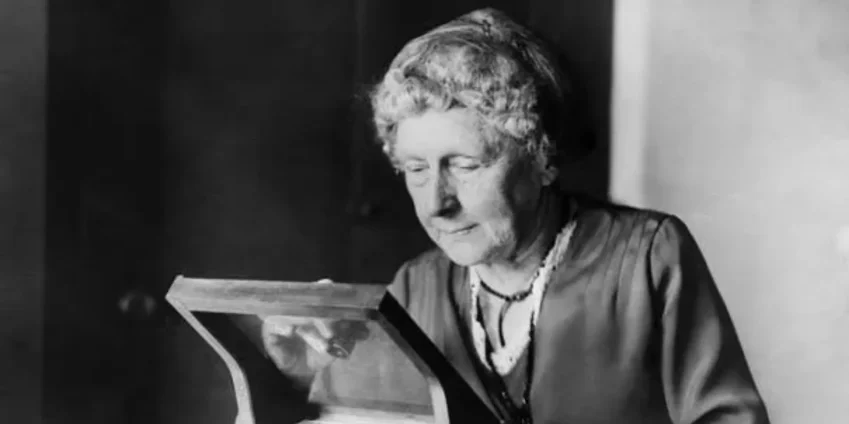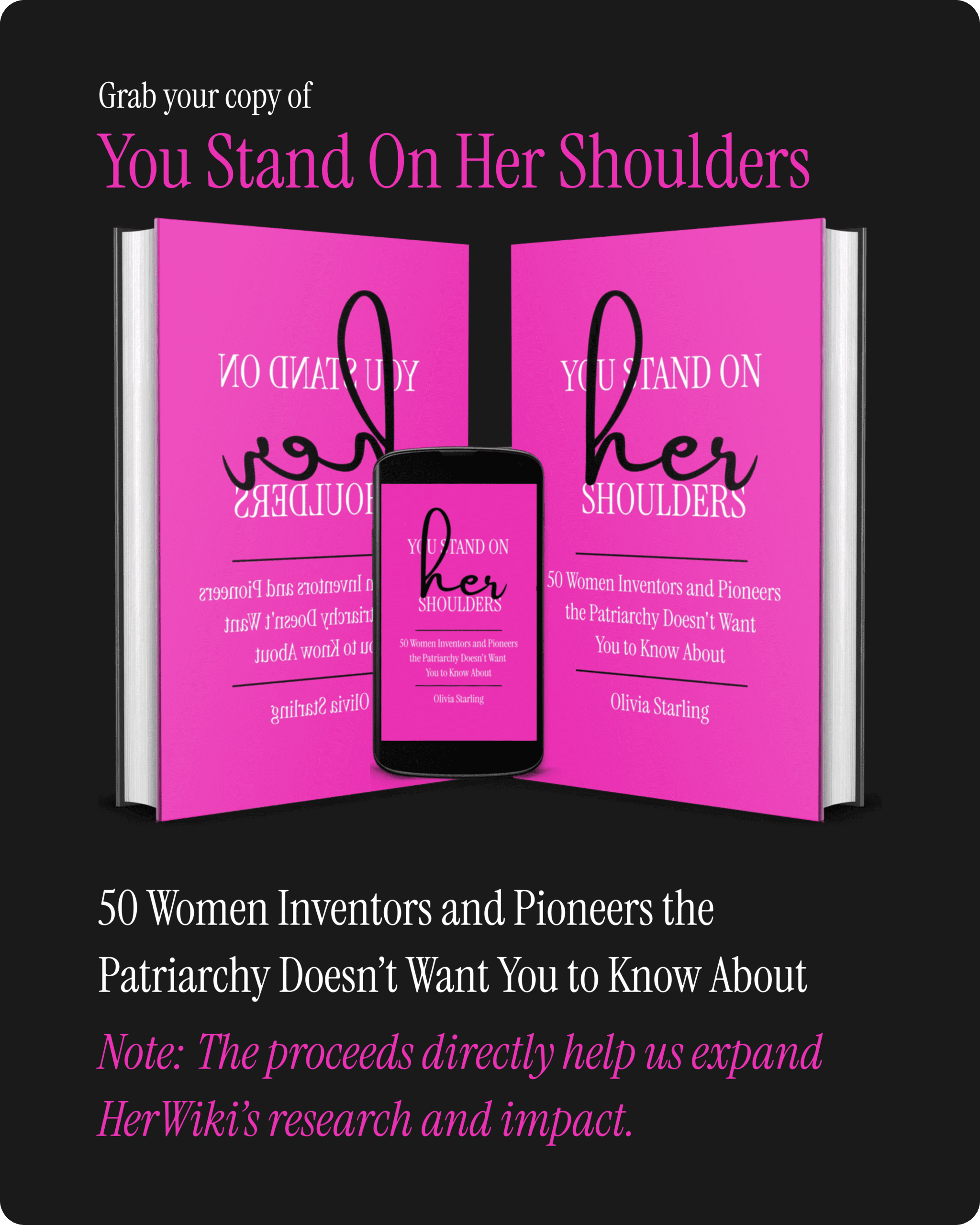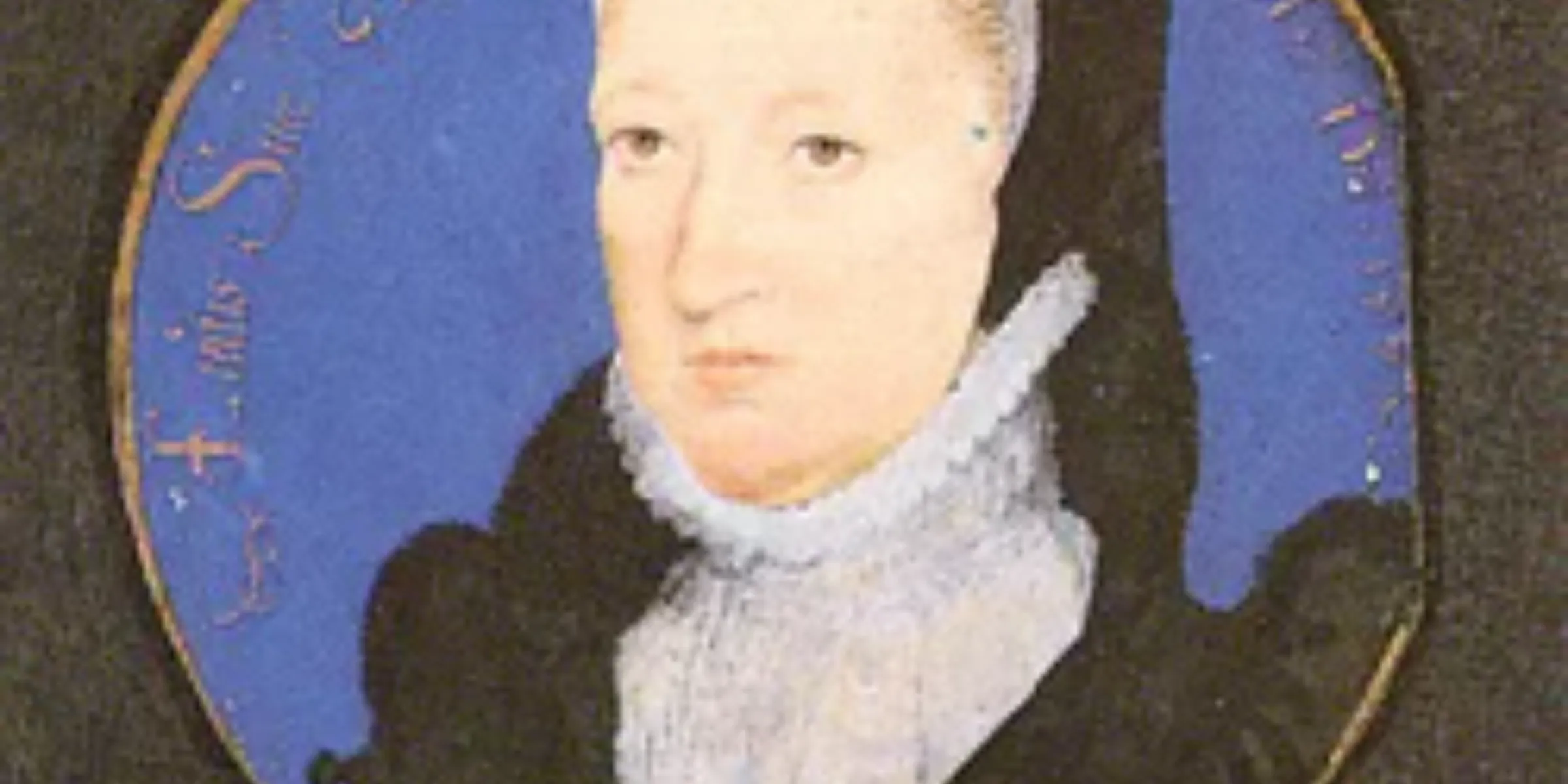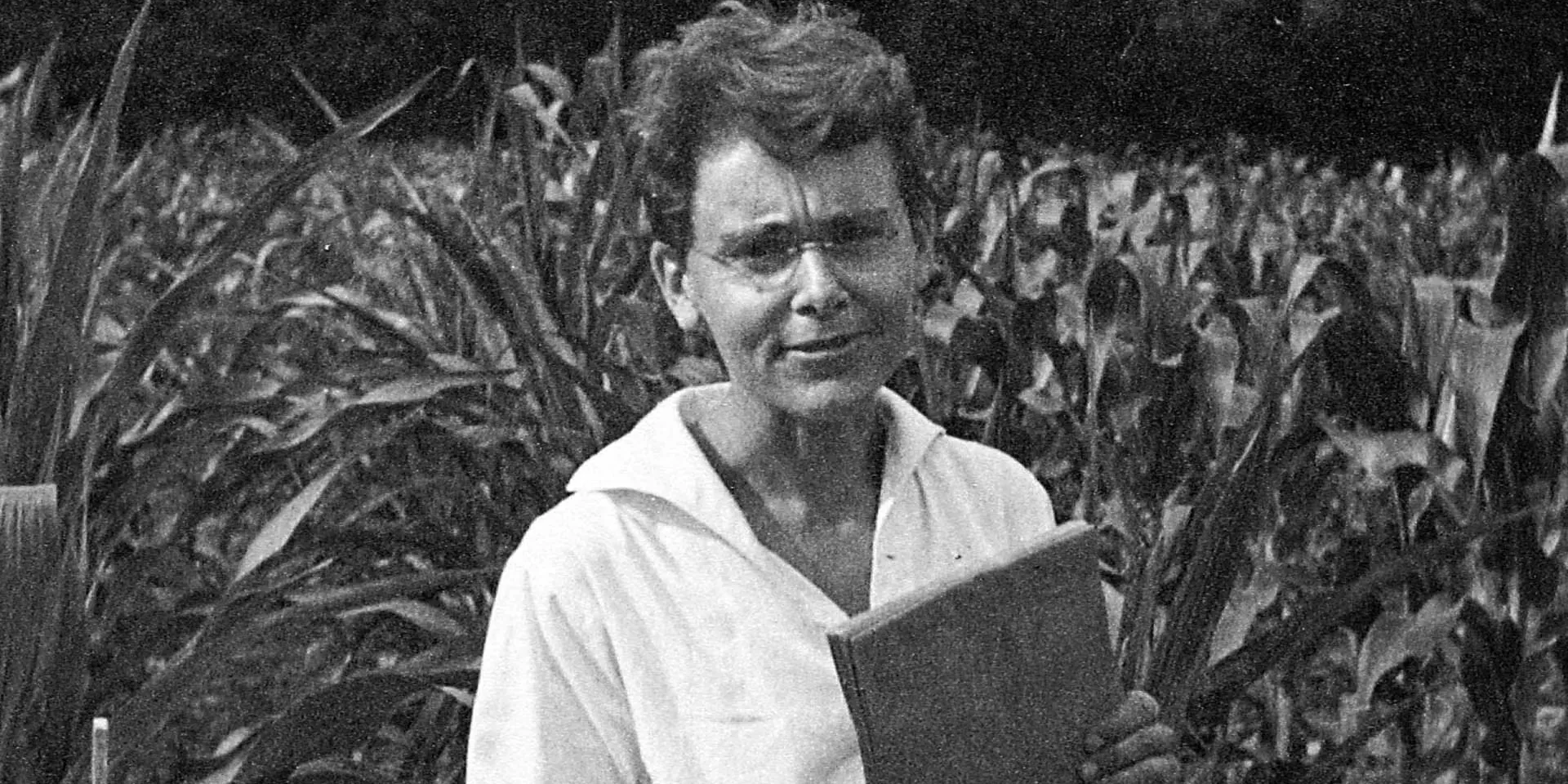Contents
ToggleEvery night, astronomers around the world use a classification system to identify stars by their temperature and composition. They sort stellar objects into categories labeled O, B, A, F, G, K, and M without thinking about the woman who created this system over a century ago. Annie Jump Cannon developed the stellar classification method that modern astronomy still uses today, cataloging more stars than any human in history while working in conditions that would challenge anyone.
She accomplished this while being nearly deaf for most of her career. Her hearing loss, caused by scarlet fever, actually helped her focus on work that required intense visual concentration and pattern recognition. While other women of her era were expected to marry and manage households, Cannon spent forty years staring at photographic plates of stars, developing the organizational system that would become the foundation of stellar astronomy.
Her story reveals how women’s contributions to science were simultaneously essential and invisible. The Harvard Observatory hired dozens of women to do the detailed work of astronomical classification, paying them a fraction of what men earned while relying entirely on their skills and insights. Cannon not only excelled in this system but transformed it, creating methods and standards that outlasted the institution that employed her.
A Shipbuilder’s Daughter in Delaware
Annie Jump Cannon was born on December 11, 1863, in Dover, Delaware, into a family that defied typical expectations of the era. Her father, Wilson Cannon, was a successful shipbuilder and state senator who moved in Delaware’s political circles. Her mother, Mary Jump, came from a well-educated family and possessed an unusual interest in astronomy for a woman of her time.
The Cannon household operated differently from most middle-class American families in the 1860s. While other mothers taught their daughters needlework and social graces, Mary Jump took young Annie to their attic at night to study the stars. Using an old astronomy textbook, mother and daughter would identify constellations and discuss the mysteries of the universe. This wasn’t just casual stargazing – Mary Jump understood enough astronomy to explain basic concepts about stellar motion and celestial mechanics to her daughter.
Mary Jump’s influence extended beyond astronomy. She taught Annie practical skills that most women of their social class would have delegated to servants. Annie learned household economics, bookkeeping, and systematic organization from her mother. These skills might have seemed mundane compared to studying the stars, but they would prove essential to Annie’s later work cataloging hundreds of thousands of stellar spectra. The ability to maintain meticulous records and organize vast amounts of data came directly from her mother’s early training.
Wilson Cannon supported his daughter’s intellectual development in ways that were radical for the time. He ensured Annie had access to the best education available, first at local schools in Dover and then at the Wilmington Conference Academy. He never suggested that his daughter’s intelligence should be hidden or diminished to make her more marriageable. In an era when many fathers saw daughters primarily as future wives and mothers, Wilson Cannon saw Annie as a person with her own intellectual potential.
The Cannon family’s financial stability gave Annie opportunities that most American women, regardless of race or class, could never access. Private tutors supplemented her formal education. The family library contained scientific texts alongside literature and history. When Annie showed aptitude for mathematics, her parents hired specialized instructors rather than steering her toward more “feminine” subjects.
The Deafness That Changed Everything
Annie’s life took a dramatic turn during her time at Wellesley College when she contracted scarlet fever. The disease left her almost completely deaf at age 29, though some sources suggest the hearing loss may have begun earlier and been exacerbated by the illness. This disability could have ended her scientific career before it truly began. In the 1890s, deaf people faced enormous discrimination and were often considered intellectually impaired regardless of their actual abilities.
Instead of retreating from public life, Annie developed coping strategies that actually enhanced her scientific work. She learned to lip-read well enough to follow conversations and lectures. More importantly, she discovered that her deafness eliminated distractions in the observatory. While other astronomers struggled to concentrate with the mechanical noises of telescopes and clocks, Annie could focus entirely on the visual data in front of her.
The social impact of deafness was perhaps harder to manage than the professional challenges. Annie had been described as vivacious and social before her hearing loss. Afterward, she found large gatherings difficult and exhausting. She gravitated toward one-on-one conversations where lip-reading was easier and began spending more time alone with her work. What might have been tragic isolation became productive solitude that allowed her to process stellar spectra at speeds that amazed her colleagues.
Her deafness also shaped how she approached scientific collaboration. Unable to participate easily in verbal discussions, she developed extremely clear written communication skills. Her notes and reports were models of precision and clarity. When she needed to explain complex classification systems or spectral patterns, she created visual aids and written guides that were more effective than verbal explanations. These communication tools would later help standardize stellar classification methods across international boundaries.
Education at Wellesley and Beyond
Wellesley College in 1880 was one of the few institutions in America that took women’s scientific education seriously. While many women’s colleges focused on preparing students to be cultured wives and mothers, Wellesley had laboratories, observatories, and professors who expected their female students to master rigorous scientific concepts.
Annie studied under Sarah Frances Whiting, one of the first women physics professors in the United States. Whiting had built Wellesley’s physics laboratory from scratch and was determined to prove that women could excel in experimental sciences. She introduced Annie to spectroscopy – the analysis of light to determine the chemical composition of stars. This technique would become the foundation of Annie’s life work.
The physics education at Wellesley went far beyond theoretical knowledge. Students learned to operate complex equipment, conduct precise measurements, and analyze data with mathematical rigor. Annie excelled at all of these skills, but she showed particular aptitude for pattern recognition. She could look at a spectral pattern and immediately identify subtle differences that other students missed. This ability would later allow her to classify stars at unprecedented speeds.
After graduating as valedictorian in 1884, Annie returned home to Delaware for a decade. This period is often glossed over in biographies, but it was crucial for her development. She wasn’t idle during these years – she pursued photography, traveled extensively, and continued studying astronomy independently. Her photography work was particularly significant because it taught her about light, chemicals, and precise technical processes that would inform her later spectroscopic work.
When Annie returned to academia in 1894, enrolling as a special student at Radcliffe College, she brought a maturity and life experience that younger students lacked. She had spent a decade thinking about what she wanted from life and had chosen science despite knowing the obstacles she would face as a deaf woman in a male-dominated field. This deliberate choice gave her a determination that impressed professors and fellow students alike.
Joining the Harvard Computers
In 1896, Edward Charles Pickering hired Annie as his assistant at the Harvard College Observatory. Pickering was unusual among male scientists of his era – he actively recruited women for his research team, though his motivations were partly economic. Women could be hired for a fraction of what male assistants would demand, allowing him to build a larger team within his budget constraints.
The women Pickering hired became known as the “Harvard Computers” or sometimes “Pickering’s Harem” – a term that reveals the sexism they faced even while doing groundbreaking work. The team included Williamina Fleming, Henrietta Swan Leavitt, and Antonia Maury, among others. Each woman brought unique skills, but they all shared the experience of being vastly overqualified for their official positions and salaries.
Annie’s first assignment was to work on the Henry Draper Catalogue, an ambitious project to photograph and classify every star visible from the northern hemisphere. Henry Draper had been a wealthy physician and amateur astronomer who pioneered stellar photography before his death in 1882. His widow, Mary Anna Draper, funded the continuation of his work as a memorial. This private funding was crucial because it allowed Pickering to pursue research that might not have received government or university support.
The work was tedious by any standard. Annie spent hours examining photographic plates through magnifying equipment, identifying spectral lines, and recording data in precise detail. Each star had to be individually analyzed and categorized. The photographs were often faint or blurred, requiring intense concentration to extract useful information. Many people would have found such repetitive work mind-numbing, but Annie thrived on it.
Her productivity was extraordinary from the beginning. While other computers might classify a few dozen stars in a day, Annie soon reached speeds of over 200 stars per hour. She developed a kind of pattern recognition that allowed her to identify spectral types almost instantaneously. Colleagues described watching her work as mesmerizing – she would glance at a spectrum and immediately call out its classification without hesitation.
The Classification Revolution
The stellar classification system that existed when Annie began her work was chaotic and controversial. Different astronomers used different schemes based on various spectral features. Antonia Maury, another Harvard Computer and the niece of Henry Draper, had developed a complex system with 22 categories and numerous subdivisions. While scientifically rigorous, Maury’s system was too complicated for practical use.
Annie recognized that a useful classification system needed to balance scientific accuracy with practical simplicity. She developed what became known as the Harvard Classification Scheme, organizing stars into seven main categories designated by letters: O, B, A, F, G, K, and M. This sequence wasn’t alphabetical but represented decreasing stellar temperatures, though this physical meaning wasn’t understood until years later.
The elegance of Annie’s system lay in its flexibility. While the main categories were simple enough for any astronomer to learn quickly, the system allowed for subtle subdivisions when needed. Each letter class could be divided into 10 numeric subcategories (0-9), allowing for precise classification without overwhelming complexity. A star might be classified as G2 or M5, providing specific information while maintaining the system’s overall simplicity.
What made Annie’s classification revolutionary wasn’t just its practical design but her recognition that stellar spectra formed a continuous sequence. Previous astronomers had tried to force stars into discrete categories, but Annie saw that spectral features changed gradually from one type to another. Her system acknowledged this continuity while providing useful categorical boundaries.
The physical meaning of the spectral sequence remained a mystery during Annie’s early work. She was classifying stars based on observable patterns without understanding why those patterns existed. It wouldn’t be until the 1920s that Cecilia Payne-Gaposchkin, using Annie’s data, would demonstrate that the spectral sequence represented differences in stellar temperature. Annie had discovered a fundamental organizing principle of stellar astronomy without fully understanding its physical basis.
Personal Life and Professional Challenges
Annie never married, a choice that was both personal and practical. Marriage in the early 1900s would have likely ended her scientific career. Married women were expected to devote themselves to household management and child-rearing. Few universities or observatories would employ married women, and husbands had legal control over their wives’ property and earnings. By remaining single, Annie maintained her independence and ability to pursue her work.
Her deafness shaped her social life in complex ways. She maintained close friendships with other women at the observatory, particularly Henrietta Swan Leavitt, who was also partially deaf. These relationships provided emotional support and intellectual companionship. The women often vacationed together, attended concerts and plays, and created a supportive community within the male-dominated observatory.
Annie’s personality was described by colleagues as warm, generous, and optimistic despite the challenges she faced. She mentored younger women astronomers and advocated for their advancement whenever possible. Her success opened doors for other women, and she used her growing reputation to push for better treatment and recognition of female scientists.
HerWiki is built and maintained by the support of amazing readers like you. If this story inspired you, join the cause and help us make HerWiki bigger and better.
The financial constraints of her position were a constant concern. Despite her groundbreaking work and international reputation, Annie earned less than male janitors at the observatory. She supplemented her income by teaching and lecturing when possible. The Cannon family’s modest wealth provided some cushion, but Annie was essentially supporting herself on wages that were insulting given her contributions to astronomy.
Her work habits were legendary even among the hardworking Harvard Computers. She often worked late into the night, taking advantage of the quiet hours when she could concentrate without interruption. She developed efficient systems for recording and organizing data that allowed her to maintain accuracy despite her tremendous speed. Her desk was meticulously organized, with every tool and reference book in its designated place.
International Recognition
As Annie’s work progressed, her reputation spread beyond Harvard and beyond the United States. European astronomers began adopting her classification system and seeking her expertise on difficult spectra. She received invitations to speak at international conferences and to visit foreign observatories, opportunities that were almost unheard of for women scientists.
In 1914, she was elected an honorary member of the Royal Astronomical Society in London. This was a remarkable achievement – the society didn’t admit women as regular members, but they created special honorary positions for exceptional female astronomers. Annie was one of the first women to receive this recognition, acknowledging that her contributions were too significant to ignore despite institutional sexism.
Her European travels in the 1920s were triumphant. She visited observatories in England, France, and the Netherlands, where she was treated as a celebrity scientist. European astronomers had been using her classification system and were eager to meet the woman who had brought order to stellar spectroscopy. She gave lectures, consulted on difficult classifications, and built international collaborations that strengthened astronomical research worldwide.
The respect she received abroad contrasted sharply with her treatment at Harvard. While European institutions awarded her honors and honorary degrees, Harvard continued to pay her a clerk’s salary and denied her a formal academic appointment for decades. This disparity revealed how individual merit could overcome some institutional barriers while others remained stubbornly in place.
Her work facilitated international standardization in astronomy. Before her classification system, astronomers in different countries used incompatible methods for describing stars. Annie’s system provided a common language that allowed researchers worldwide to share data and build on each other’s work. This standardization was crucial for astronomy’s development as a truly international science.
The Fight for Professional Recognition
Despite her monumental contributions, Annie faced constant battles for professional recognition at Harvard. For years, she held the title of assistant while doing work that would have earned a man a full professorship. Her male colleagues respected her expertise and relied on her classifications, but institutional policies prevented her advancement.
The situation began to change in the 1920s as younger male astronomers who had benefited from Annie’s work rose to positions of power. Harlow Shapley, who became director of the Harvard Observatory in 1921, recognized the injustice of Annie’s position. He began advocating for her promotion and proper recognition, though progress was frustratingly slow.
In 1925, Oxford University awarded Annie an honorary Doctor of Science degree – the first woman to receive this honor from Oxford. The ceremony was a major media event, with newspapers worldwide covering the story of the deaf American woman who had classified the stars. This international recognition put pressure on Harvard to properly acknowledge her contributions.
Finally, in 1938, Harvard appointed Annie as the William C. Bond Astronomer, a titled position that came with a small increase in salary and significant increase in status. She was 74 years old and had been working at the observatory for 42 years. The appointment was both a triumph and a reminder of how long she had been denied proper recognition.
Even with the appointment, Annie continued to face discrimination. She was excluded from faculty meetings and decision-making processes. Male colleagues who respected her scientific work still saw her as fundamentally different from “real” professors. She navigated these slights with dignity while continuing her research until weeks before her death.
The Scientific Legacy
By the time Annie died on April 13, 1941, she had classified more stars than any other person in history – approximately 350,000. This wasn’t just a numerical achievement but a fundamental contribution to astronomical knowledge. Her classifications provided the data that other astronomers used to understand stellar evolution, galactic structure, and the physical properties of stars.
The Harvard Classification System, refined and extended by Annie over decades, became the international standard and remains in use today with minor modifications. Every astronomy student learns the spectral sequence O-B-A-F-G-K-M, often through mnemonics like “Oh Be A Fine Girl/Guy, Kiss Me.” Few realize they’re learning a system created by a deaf woman working for subsistence wages at Harvard.
Annie’s work enabled numerous other astronomical discoveries. Cecilia Payne-Gaposchkin used Annie’s classifications to demonstrate that stars were composed primarily of hydrogen and helium, overturning previous assumptions about stellar composition. Other astronomers used her data to map galactic structure and understand how stars evolve over time. Her classifications provided the observational foundation for 20th-century astrophysics.
Beyond her scientific contributions, Annie created detailed catalogs and references that made astronomical data accessible to researchers worldwide. She understood that science progressed through shared knowledge and worked to ensure her data was clearly presented and widely available. Her catalogs included not just classifications but detailed notes about unusual spectra, variable stars, and other phenomena that might interest future researchers.
Her discovery of over 300 variable stars and 5 novae demonstrated that classification work involved more than mechanical categorization. She had to understand stellar behavior deeply enough to recognize when something unusual appeared in the data. Each discovery required careful observation and analysis to confirm that variations were real rather than photographic artifacts.
The Human Cost of Brilliance
Annie’s story reveals the human cost of scientific achievement in an era of systematic discrimination. She spent her entire career fighting for recognition that would have been automatic for a man with her abilities. The energy she spent navigating sexism and ableism was energy that could have gone toward additional scientific work.
Her deafness, which she turned into a professional advantage through determination and adaptation, still isolated her socially and limited her opportunities. She couldn’t participate fully in scientific discussions and conferences where much informal knowledge exchange occurred. Her written communications were brilliant, but she missed the spontaneous collaborations that hearing scientists took for granted.
The financial insecurity she faced throughout her career was a constant source of stress. Despite her international reputation, she worried about having enough money for retirement. She lived frugally, saving what she could from her meager salary. The fact that one of the world’s leading astronomers faced economic hardship reveals how thoroughly the system devalued women’s contributions.
Her choice to remain unmarried meant sacrificing the family life that was expected of women in her era. While this choice enabled her career, it also meant facing old age without children or a spouse for support. She relied on friends and colleagues, but the social safety net for unmarried women was minimal. Her dedication to science came at a personal cost that male scientists rarely had to pay.
The psychological toll of constant discrimination is harder to quantify but no less real. Annie maintained a positive public persona, but private letters reveal moments of frustration and hurt at her treatment. She watched less qualified men receive positions and honors that were denied to her. She had to smile and remain gracious when credited as someone’s assistant rather than as the lead researcher she actually was.
Transforming Stellar Astronomy
Annie’s impact on astronomy went far beyond classification. She transformed stellar spectroscopy from a chaotic collection of observations into a systematic science. Before her work, astronomers collected spectral data without a coherent framework for understanding it. After her work, they had a powerful tool for investigating stellar properties and evolution.
Her classification system revealed patterns that suggested underlying physical principles. The continuous sequence of spectra hinted at a temperature sequence, though this wouldn’t be proven until later. The relative rarity of O and M type stars compared to G type stars like our sun suggested something about stellar evolution or formation. These patterns guided theoretical astronomers toward productive research directions.
The sheer volume of her classifications enabled statistical studies of stellar populations. Astronomers could ask questions about the distribution of different stellar types in various parts of the galaxy. They could search for correlations between spectral type and other properties like motion or position. This statistical approach to astronomy was only possible because Annie had provided such a vast, consistently classified dataset.
Her work also standardized the practice of stellar spectroscopy itself. She developed procedures for taking and analyzing spectra that ensured consistency across different observations. Her methods were adopted by observatories worldwide, creating a common technical culture in astronomical spectroscopy. This standardization was as important as the classification system itself for advancing the field.
The Recognition
In recent decades, Annie Jump Cannon has finally begun receiving the recognition she deserved during her lifetime. The American Astronomical Society established the Annie Jump Cannon Award in 1934 to recognize outstanding research by women astronomers early in their careers. The award has supported numerous women who have gone on to distinguished astronomical careers.
Craters on the Moon and Mercury bear her name, as does asteroid 1120 Cannonia. These celestial namings place her among the immortals of astronomy, her name literally written in the heavens she spent her life studying. Modern astronomers understand that their work builds on foundations she laid through decades of painstaking observation and classification.
Science historians have recognized Annie as a crucial figure in the development of astrophysics. Her work bridged the gap between traditional astronomy focused on positions and movements and modern astrophysics focused on stellar composition and evolution. She provided the observational framework that made theoretical advances possible.
Educational initiatives have begun highlighting her story as an example of how disability need not prevent scientific achievement. Deaf students in particular find inspiration in how she turned her deafness into a professional advantage. Her story demonstrates that different abilities can lead to different insights and approaches that enrich scientific research.
Modern technology has validated the accuracy of Annie’s classifications in ways she could never have imagined. Computer analysis of stellar spectra confirms that her visual classifications were remarkably precise. Her ability to process complex visual information and identify subtle patterns exceeded what early computers could achieve. Only recently have machine learning systems matched her classification speed and accuracy.
The Continuing Relevance
Annie Jump Cannon’s story remains relevant for contemporary discussions about diversity in science. Her experiences illuminate how systemic discrimination wastes human potential and slows scientific progress. The decades Harvard spent denying her proper recognition were decades when she could have been training more students and advancing research further.
Her approach to science – meticulous, systematic, but also intuitive and holistic – offers lessons for modern researchers. She demonstrated that pattern recognition and careful observation could reveal fundamental truths about nature. In an era of big data and automated analysis, her human-centered approach to classification reminds us that understanding often comes from patient, careful observation.
The collaborative model she developed with other women at Harvard presaged modern team-based scientific research. The Harvard Computers supported each other professionally and personally, creating a productive research environment despite institutional hostility. Their success demonstrated that diverse teams could achieve more than isolated individuals.
Her international perspective on science was ahead of its time. She understood that astronomical knowledge transcended national boundaries and worked to facilitate international collaboration. In our current era of global scientific challenges, her example of building international scientific communities remains instructive.
Annie Jump Cannon spent her life bringing order to the stars while fighting for recognition in a world that tried to limit her contributions. She classified more stars than any person before or since, created the system still used to understand stellar types, and paved the way for fundamental discoveries about the universe. Her legacy lives on in every astronomical observation that uses spectral classification, in every woman who pursues a scientific career despite obstacles, and in our understanding that the universe’s mysteries yield to patient, systematic observation regardless of who does the observing.
She proved that neither deafness nor discrimination could prevent a determined mind from reading the stories written in starlight. Her life reminds us that the greatest scientific contributions often come from those who society tries to exclude, and that true progress requires recognizing brilliance wherever it appears, not just where we expect to find it.







